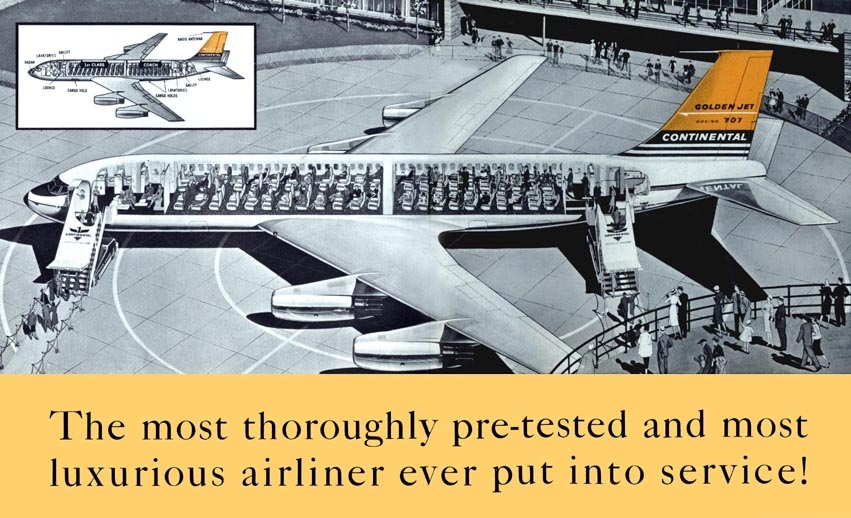Peering into tomorrow's jet airliner
23 August, 2015
3 min read
While the above headline may appear futuristic even today, back in 1959 it was almost the equivalent of space travel, as the world’s first long-range jet-powered airliners took to the skies. And perhaps no other flying machine captured the essence of commercial air travel in the Jet Age like Boeing’s magnificent new 707, a four-engine, swept-wing, 150-passenger goliath that dwarfed any other airliner on the ramp. Sleek and powerful, yet stylish and sophisticated, the 707 represented a new paradigm in air travel.
As impressive as all this may have seemed, there was actually an awkward transition before modern terminals capable of handling the jetliners were built at airports around the globe. This meant the new, yet smoky and noisy jets had to be integrated into existing airport operations amidst their smaller piston-powered brethren. In 1959, it was not uncommon to see a shiny new American, TWA, or Pan Am 707 parked at the end of a low chain-link fence-enclosed concourse surrounded by Constellations, Stratocruisers and DC-7s, and Convairliners.
Having the jetliner parked out on a ramp meant that passengers had to climb even more stairs to reach the aircraft’s door, and oftentimes in rain or snow. Whether truck-mounted or pushed into position by hand, open stairs seemed like an odd method for boarding a 600-mph 250,000-pound jetliner. Once the doors were closed, jet blast from the taxiing aircraft posed significant hazards for ramp personnel and ground equipment. With the advent of new airline terminals specifically designed to deal with these problems, jet operations became far more routine.
Continental introduced their 707s serving points from Chicago to the U.S. West Coast. Climbing aboard the marketing bandwagon that sparked names like “Jet Clipper,” Jet Mainliner,” and “Astrojet,” Continental celebrated their new arrival by highlighting the airline’s existing color scheme with a gold-painted tail, calling their new 707s “Golden Jets.” This name was later modified into “The Proud Jets with the Golden Tails,” but you get the idea.
The accompanying ad illustrates all the aforementioned factors. The jet is parked in an absurdly small circular ramp enclosed only by – what else? – a low chain-link fence. Spectators standing behind the aircraft would be theoretically blown into adjacent buildings by the 707’s jet blast when it left the gate. In a prescient nod to the Jetway, notice that Continental’s truck-mounted boarding stairs are covered to protect passengers from the elements. Notice also the complete and glaring absence of any other ground equipment on the ramp.
Inside the aircraft, we discover additional surprises, like twelve spacious rows of four-abreast First Class seats compared to only ten rows of more economically spaced six-across coach seats. There is also a First Class lounge featuring comfortable club-seating just aft of the forward galley and lavatories. Airliner fans will notice subtle anomalies like an aft baggage door located behind the wing on the left side, overly large engine nacelles, and slightly undersized people to heighten the impression of the jetliner’s mammoth size.
Were Continental’s “Golden Jets” well received by the traveling public? Absolutely! Competing with United’s new Douglas DC-8 “Jet Mainliners” on the lucrative Chicago-Los Angeles and Chicago-San Francisco routes, “Golden Jets” introduced legions of both neophyte and veteran air travelers to Jet Age speed, comfort, and convenience. Being able to peer inside Continental’s Boeing 707 before ever buying a ticket made the journey that much more enticing.
Next Article
Qantas triples profit but misses mark

Get the latest news and updates straight to your inbox
No spam, no hassle, no fuss, just airline news direct to you.
By joining our newsletter, you agree to our Privacy Policy
Find us on social media
Comments
No comments yet, be the first to write one.

